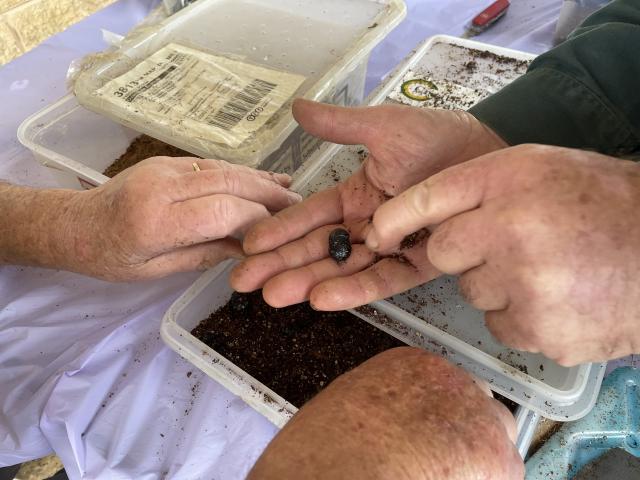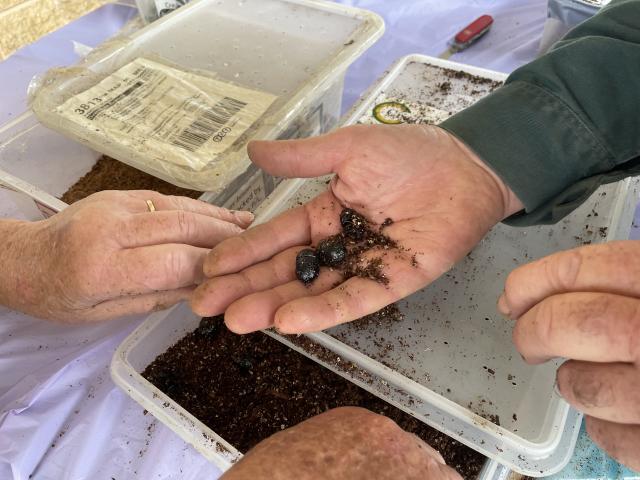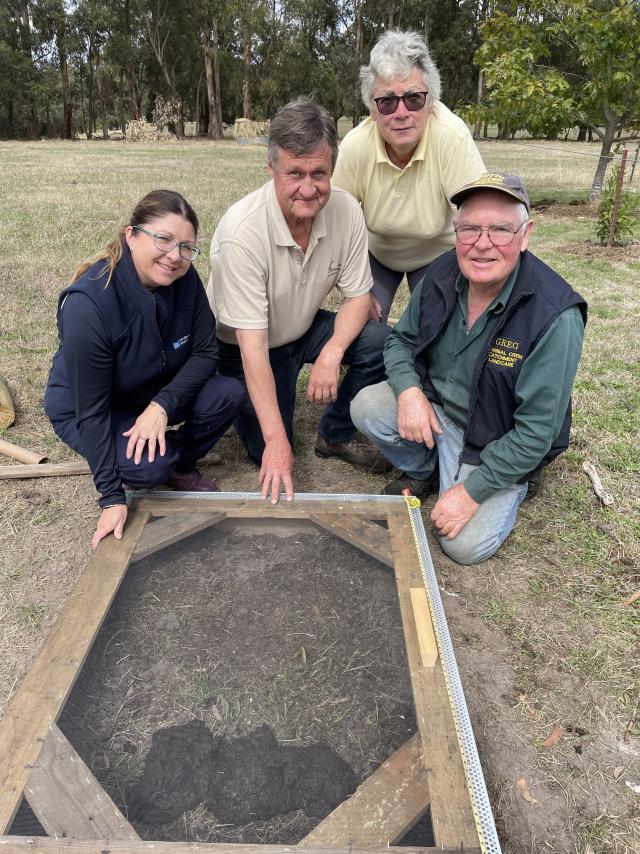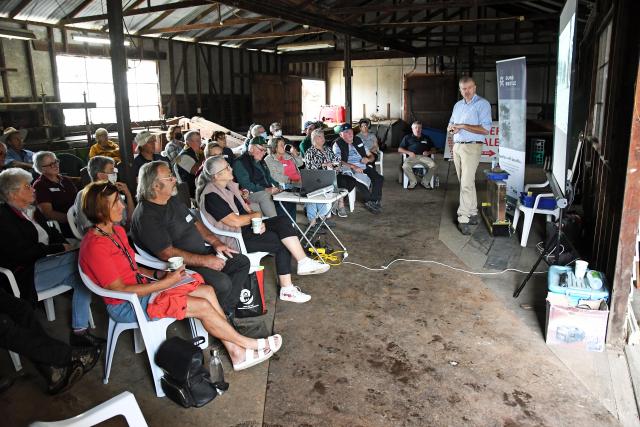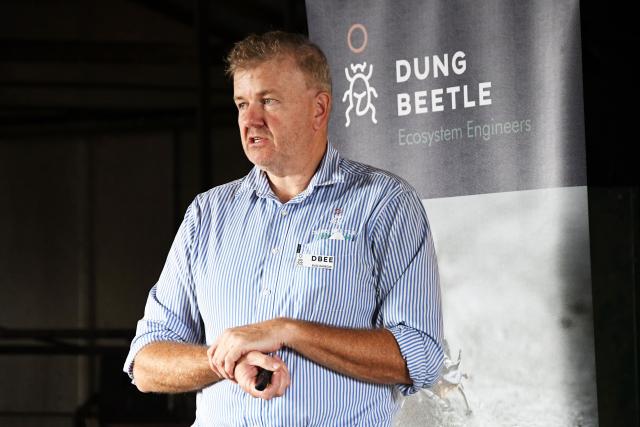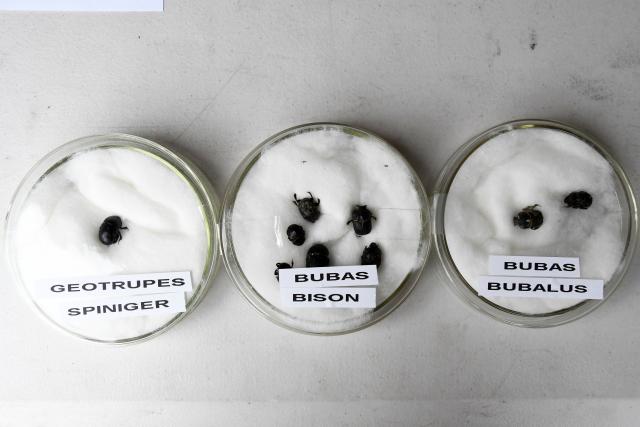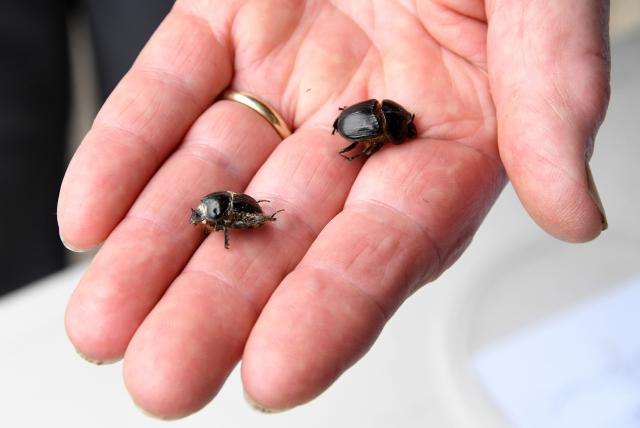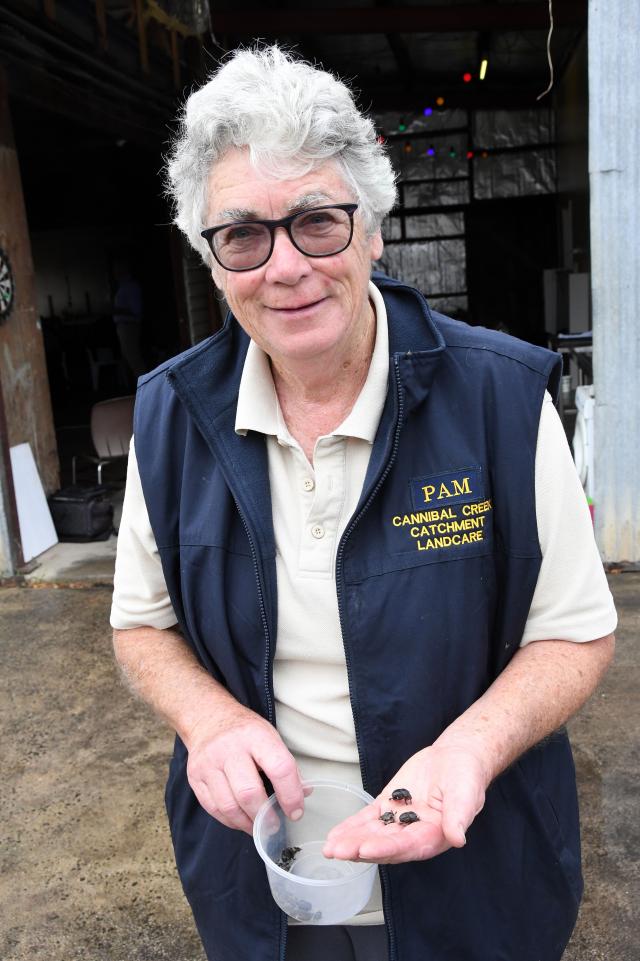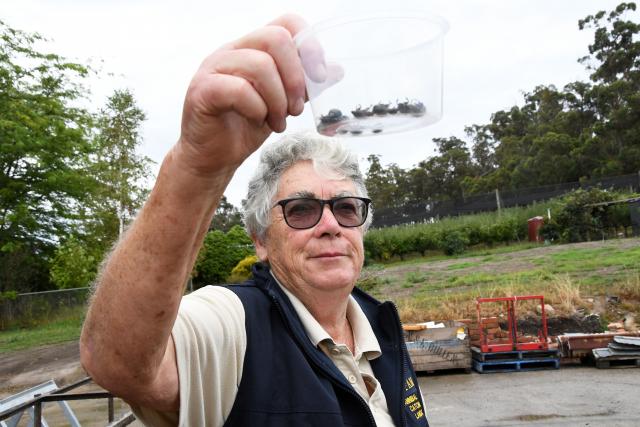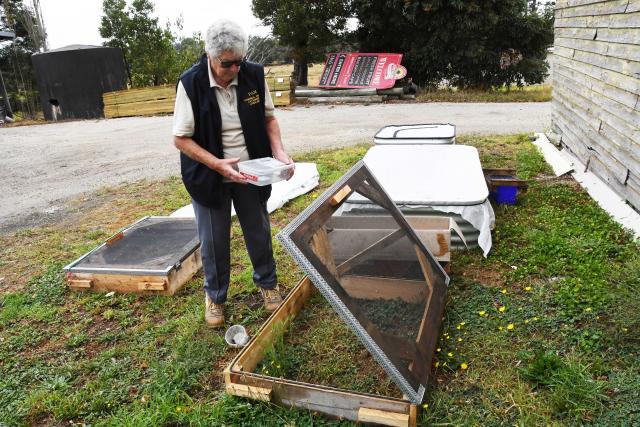It’s a breeding program with a difference, as a handful of Cannibal Creek Landcare members take possession of 1000 sires and dams that the group hopes will have a big impact on local paddocks and pasture. ANDREW CANTWELL digs a little deeper to uncover the significance of the new breed stock.
Cannibal Creek Landcare Group members took possession of 1000 head of prime breeding stock in mid-March, as part of a larger breeding program they hope will have a substantial impact on farm productivity in coming years – but there was not a livestock transport to be seen, nor a baa, bleat or moo in earshot.
Instead, the stock came bundled in a handful of plastic containers.
And far from being foragers like other herd animals, this stock prefer to feast on what other herd animals leave behind after they’ve done their business – literally.
The shipment was 1000 head of Geotrupes Spiniger – a dung beetle variety, originating in south-west Europe and well adapted to deal with the meals left them by the cud-chewing stock that have also originated in that region of the world.
The beetles, though small in size, are a powerhouse in the paddocks with several beneficial impacts and no known drawbacks.
The Cannibal Creek Landcare members’ hope is that other local farmers will catch the dung beetle bug, and thereby spread the benefits to a wider geographic footprint than they can cover themselves, so they’re keen to get the word out.
An information session at the weekend’s Bunyip Show just a part of their efforts.
And a recent field day outlining the beetles’ benefits was sold out, so the interest is there – which is an encouragment to Landcare group secretary Pam Cunningham.
Pam, along with husband Gerard – the group’s president – and local landholders Greg Collins and Alan Forte are some involved in the breeding program.
Pam explains the Landcare group became active in the field after hearing a beetle expert speak about six or so years ago.
And Greg Collins says he’s been “fascinated” for a few decades with the beetles’ qualities.
Each has been involved with a variety of the beetles for several years now – mostly on a buy in and release basis.
So the breeding program will allow the group to save on costs while having a good seed stock to collect and spread more easily.
But the recent arrival of the spinigers holds extra significance.
The Gazette was on location at Pam’s Tynong North property when the shipment arrived.
The beetles come from a breeder in Tasmania, packed in sterile peet and coir – there’s no chance of introducing a soil-based biosecurity risk there – and shipped on large flat ice packs to keep them calm.
It doesn’t take them long once released from the packaging to regain an active temperature, and the sorting bins thrum with activity as the beetles try out their wings again after a time of chilling in transit.
There’s particular excitement at their arrival as they fill a gap in the seasonal cycle not covered by any of the other beetle varieties Pam has.
The variety is an ‘autumn’ beetle and will be active at times not covered by the other three main varieties.
Vacca, bubulas and taurus varieties of dung beetle are already bedded in.
The latest arrivals are quickly counted out into containers for distribution to the other farms, and Pam takes hers outside to the specially constructed bedding frames built to keep the breed stock close – and safe from predators, as they make a tasty morsel for a keen-eyed bird or fox.
The frames are dug over a foot into the ground, and covered with a thin mesh. Pam explains that she’s been around the edges with a staple gun that morning, as the beetles have a bad habit of testing every loose flap and fold, and so could potentially fly the coop.
Once housed and fed, the fresh batch of beetles quickly disappear from view. In the 15 minutes between housing one batch of 50 and counting out another batch for a separate frame, only one of the original batch is still visible at the surface – and that only for a couple of minutes.
The rest have already burrowed in.
With housing and feed taken care of, the rest of the breeding program is an unknown, as all the ‘action’ takes place underground.
The spiniger beetles have a lifespan of up to a year, so must feed and breed in pretty quick order.
As well as being their food source, the dung is rolled into ‘brood’ balls in which the females place an egg. The balls are then buried in passages below ground.
The eggs hatch in a matter of days, and the hatched larvae then feed within the brood balls until they reach the pupal stage. After pupating, the young adult beetles emerge from the brood balls and make their way to the surface to start their own brief cycle.
The remains of the brood balls stay underground and add to the nutrient levels below ground, also locking in trace elements and other beneficial byproducts within the dung.
There’s a direct relationship between beetle numbers and the amount of feed.
The hope is that the beetles will spread to match the food supply on the host farms as well as to neighbouring farms.
The more beetles active in the paddocks, the more effective their work becomes.
There are a few things that work against the natural spread – the beetles won’t fly over treed areas – and what they feast on matters.
For a bug with that food choice, instead of having a cast-iron belly, the dung beetle has a surprisingly delicate constitution, so the choice of feed is vital. Pam sources fresh dung from an organic dairy farm in the district, as the chemicals that come through in other farming operations can affect the beetles.
Each morning, a fresh row of the organic dung is laid out in the frames. This allows the stud masters to assess the activity of the beetles and adjust the quantity of feed.
With biosecurity a key consideration these days, there’s a lot to recommend the introduction of the beetles onto farms.
A quick list of benefits includes:
· Stowing unwanted excrement below ground, where it can more easily be broken down in the soil microbiome and the nutrients utilised by existing pasture.
· The extra nutrient in the soil means less need for fertiliser, reducing farm costs, while also capturing carbon.
· The reduction in nutrient-rich organic matter at the surface means less run-off into waterways, reducing algal bloom.
· Breaking up the moist pats also reduces the breeding grounds for flies and can disrupt the lifecycle of parasites, leading to fewer vet costs.
· And the beetles’ burrows allow water to more easily get into the soil.
In the bigger picture, the introduced beetles pose little environmental risk – there’s no ‘cane toad’ factor associated with their release.
In fact, the stud masters could only hope for the reproductive success of the cane toad in their beetles.
But there are no toxic side-effects, no competition with other beneficial bugs and beetles, and no issues with the food chain.
The only insects impacted by the beetles’ activity are bush flies, a nuisance to anyone growing up on a farm.
The bush flies lay eggs in cracks and crevices at the base of dung, where the larvae (maggots) will feed on the moisture until developing into flies.
The beetles offer competition for the food source, as they also feed on the moisture – but, further, the beetles also package up and squirrel away the maggot nurseries.
In both ways, the beetles disrupt the lifecycle of a major farm insect pest.
The breeding program has been a real community effort, by all accounts.
Pam said the group had received funding from Cardinia Shire Council, Melbourne Water’s catchment management program, two local opportunity shops at Garfield and Bunyip, and had received practical support from the Warragul Men’s Shed in making the bedding frames.
For details on dung beetles visit dungbeetles.com.au

